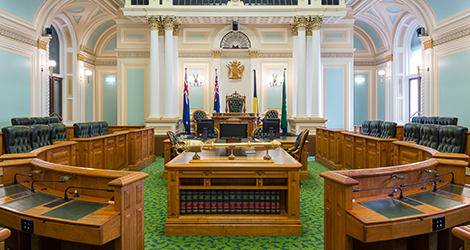A vast tract of land in the far north-west corner of the state is being protected in perpetuity as a new national park by the NSW Government.

Premier Dominic Perrottet said the 437,394 hectare site between Tibooburra and Bourke will become the third largest national park in New South Wales and a major new tourism drawcard for the region.
“This is the largest ever single parcel of land to be acquired for the national park estate in New South Wales,” Mr Perrottet said.
“It will provide yet another reason for people to venture out and explore this part of the state, driving tourism dollars in the region and at every stop along the way.
“The economic benefits of this are far reaching, with our national parks contributing around $18 billion and 74,000 jobs to the state economy every year, with three-quarters of that going directly to regional areas.”
Minister for Environment James Griffin said the acquisition of Thurloo protects globally significant wetlands, vast outback ecosystems, and provides a haven for about 50 threatened species.
“Securing a site this big for addition to our national park estate is a once-in-a-lifetime opportunity for the people of New South Wales,” Mr Griffin said.
“Protecting a property of this scale in perpetuity means we conserve bigger populations of more species, including some of the most endangered.
“What’s even more extraordinary, is that when combined with the adjacent Narrieara-Caryapundy National Park and the nearby Sturt National Park, our national parks now protect an almost completely connected area of about one million hectares west to the South Australia border.
“We want this park to be a drawcard for visitors and an asset to the entire local community. Far from keeping people out, we’ll invest in the jobs and infrastructure to welcome people in to walk, explore, camp and see what a beautiful part of the landscape it is.”
The National Parks and Wildlife Service (NPWS) will engage additional staff to manage the property and deliver $4 million in capital works to support park management and visitor infrastructure such as campgrounds, day-use areas, observation points and outback driving routes.
It will use the next 2 years to ramp up feral animal and weed control as part of the largest ever feral pest control program in NPWS history, undertake ecological surveys and plan visitor infrastructure while the property transitions from pastoral station to national park.
Thurloo, together with neighbouring Narriearra-Caryapundy National Park, hosts a significant portion of the Bulloo Overflow floodplain, which is a huge wetland at the end of one of Australia’s last free-flowing rivers, the Bulloo. After rains, these wetlands support hundreds of thousands of birds, fish and other animals, including mass communal nesting events for pelicans, egrets and terns.
Thurloo is located in the traditional country of the Karenggapa and Parundji people, and the property has extensive Aboriginal cultural heritage with evidence of artefacts including hearth remains, flakes, grinding plates and other items of significance. NPWS will work closely with the Aboriginal community to protect these important cultural sites.







